Saul Bass (8 de mayo de 1920 - 25 de abril de 1996) fue un reconocido diseñador gráfico estadounidense, mejor conocido por su trabajo en la industria cinematográfica y en el diseño de algunas de las identidades corporativas más importantes de Estados Unidos.
Biografía
Saul Bass nació en el Bronx, en 1920. Desde pequeño fue muy creativo y pasaba muchas horas del día dibujando. Bass estudió en el estudio de Artes League en Nueva York y después en el Colegio de Brooklyn. En éste último fue su maestro Gyorgy Kepes, un diseñador gráfico húngaro que había trabajado con László Moholy-Nagy en Berlín antes de emigrar a los Estados Unidos. Kepes fue el que introdujo a Saul Bass al estilo Bauhaus de Moholy y al constructivismo ruso.Después de trabajar en varias agencias de diseño de Nueva York, Bass trabajó de forma independiente como diseñador gráfico (o “artista comercial” como comúnmente se les llamaba). Decidió mudarse a Los Ángeles en 1946, debido a que en Nueva York encontraba muchos impedimentos para desarrollarse creativamente. Abrió su propio estudio en 1950, dedicado principalmente a la publicidad, hasta que Otto Preminger lo invitó a diseñar el póster para su película Carmen Jones (1954). A éste le impresionó tanto el trabajo de Bass, que le pidió que diseñara también la secuencia de los títulos de la película. Luego siguió el diseño de títulos de las películas The Big Knife de Robert Aldrich y The Seven Year Itch (La Tentación Vive Arriba) de Billy Wilder. Pero fue en el siguiente proyecto de Preminger, The Man with the Golden Arm (El Hombre del Brazo de Oro), en donde Bass se reveló como un maestro del diseño de títulos de crédito de películas.
Bass siguió su camino en el mundo del diseño en el cine. Martin Scorsese lo reconocía ampliamente. Colaboró con Alfred Hitchcock y hasta participó en la famosa película Psicosis durante la escena de la ducha, de la que se dice que él fue el responsable del Story board, aunque Hitchcock nunca lo reconoció. Junto con su segunda esposa, Elaine, diseñó títulos para otros directores. Luego dirigió varios cortometrajes, como The Searching Eye (1964), From Here to There (1964) y Why Man Creates (1968) con la que ganó un Óscar. Finalmente realizó una película como director en 1974, llamada Phase IV.
Después regresó al diseño gráfico comercial. Entre los más exitosos están los emblemas de AT&T, United Airlines, Minolta, Bell, y Warner Communications. Diseñó también el póster para los Juegos Olímpicos de Los Ángeles en 1984.
Hasta el final de su vida siguió colaborando con su ídolo Martin Scorsese en Goodfellas, Cape Fear (El Cabo del Miedo), The Age of Innocence (La Edad de la Inocencia) y Casino en los años 90.
Saul Bass falleció en 1996.
Estilo
Alguien se puede sentir presionado para citar un ejemplo de una secuencia activa, autónoma y característica de los títulos de crédito antes del trabajo de Saul Bass. Indudablemente, hay ejemplos que presagian los pioneros trabajos de Bass: los famosos títulos finales de crédito de Ciudadano Kane, repitiendo excepción para la película, subrayando el metraje con los nombres de los actores. También había ciertas tendencias precursoras de los años 30 y 40. Muchas películas de estos años están visualmente acompañadas por créditos estáticos, y en algunos casos por montajes. Pero a pesar de estos ejemplos y en vista de la innovación, renovación e influencia, se puede decir que el impactante diseño de los créditos de Bass no tiene parangón, ni siquiera hoy en día.La maestría de Bass en el diseño exhibe una forma (sus identidades corporativas y pósters también son grafismos perdurables y de relevancia) de distinción estética económica y simple. Es en este campo que su trabajo en el diseño de los títulos de crédito tiene una importancia particular – su apertura para West Side Story, por ejemplo, es un sólido bloque de color que varía de acuerdo a la insinuación. Las técnicas de Bass son variadas y decididamente inconscientes: animación de recortes, montaje, acción real y diseño de nombres son solo sus más prominentes ejercicios. En segundo lugar, Bass exhibe un ejemplar uso del color y del movimiento. Las secuencias comienzan a menudo con un marco de color sólido (como el azul de Exodus o el verde de North by Northwest). Su diseño táctico en este contexto, aunque característico, posee sutilezas y variedades.
Filmografía
-
- Carmen Jones (Otto Preminger)
-
- La Tentación Vive Arriba (Billy Wilder)
- The Racers (Henry Hathaway)
- The Big Knife (Robert Aldrich)
- The Shrike (José Ferrer)
- El Hombre del Brazo de Oro (Otto Preminger)
-
- Storm Center (Daniel Taradash)
- Johnny Concho (Don McGuire)
- Attack (Robert Aldrich)
- La Vuelta al Mundo en Ochenta Días (Michael Anderson)
- Trapeze (Carol Reed)
-
- Saint Joan (Otto Preminger)
- El Orgullo y la Pasión (Stanley Kramer)
- The Young Stranger (John Frankenheimer)
- Edge of the City (Martin Ritt)
-
- Buenos Días, Tristeza (Otto Preminger)
- Vértigo (Alfred Hitchcock)
- Cowboy (Delmer Daves)
- Horizontes de Grandeza (William Wyler)
-
- Intriga Internacional (Alfred Hitchcock)
- Anatomía de un Asesinato (Otto Preminger)
- Psicosis (Alfred Hitchcock)
- Ocean's Eleven (Lewis Milestone)
- Espartaco (Stanley Kubrick)
- Facts of Life, The (Melvin Frank)
-
- Éxodo (Otto Preminger)
-
- Amor sin Barreras (Jerome Robbins - Robert Wise)
- Something Wild (Jack Garfein)
-
- Walk on the Wild Side (Edward Dmytryk)
- Advise and Consent (Otto Preminger)
- Flashing Spikes (John Ford) (TV)
-
- Nine Hours to Rama (Mark Robson)
- It's a Mad Mad Mad Mad World (Stanley Kramer)
- El Cardenal (Otto Preminger)
- The Victors (Carl Foreman)
-
- In Harm's Way (Otto Preminger)
- Bunny Lake Is Missing (Otto Preminger)
-
- Grand Prix (John Frankenheimer)
- Seconds (John Frankenheimer)
- Not with My Wife, You Don't! (Norman Panama)
-
- Such Good Friends (Otto Preminger)
-
- Phase IV (Saul Bass)
-
- Rosebud (Otto Preminger)
-
- That's Entertainment, Part II (Gene Kelly)
-
- El Factor Humano (Otto Preminger)
-
- Al Filo de las Noticias (James L. Brooks)
-
- Quisiera Ser Grande (Penny Marshall)
-
- La Guerra de los Rose (Danny De Vito)
-
- 84C MoPic (Patrick Sheane Duncan)
-
- GoodFellas (Martin Scorsese)
-
- Doctor Hollywood (Michael Caton-Jones)
- Cabo de Miedo (Martin Scorsese)
-
- El Cómico de la Familia (Billy Crystal)
-
- La Edad de la Inocencia (Martin Scorsese)
-
- Higher Learning (John Singleton)
- Casino (Martin Scorsese)
- A Personal Journey with Martin Scorsese Through American Movies (Martin Scorsese) (TV)
Enlaces externos
http://saulbass.tvllllllllllllllllllllllllllllllllllllllllllllllllllllllllllllllllllllllllllllllllllllllllllllllllllllllllllllll
Saul Bass
From Wikipedia, the free encyclopedia
| Saul Bass | |
|---|---|
 |
|
| Born | May 8, 1920 New York City, New York, United States |
| Died | April 25, 1996 (aged 75) Los Angeles, California |
| Occupation | Graphic designer, title designer, film director |
| Spouse(s) | Elaine Bass (1961-1996; his death; 2 children) |
During his 40-year career Bass worked for some of Hollywood's most prominent filmmakers, including Alfred Hitchcock, Otto Preminger, Billy Wilder, Stanley Kubrick and Martin Scorsese. Among his most famous title sequences are the animated paper cut-out of a heroin addict's arm for Preminger's The Man with the Golden Arm, the credits racing up and down what eventually becomes a high-angle shot of a skyscraper in Hitchcock's North by Northwest, and the disjointed text that races together and apart in Psycho.
Bass designed some of the most iconic corporate logos in North America, including the AT&T "bell" logo in 1969, as well as AT&T's "globe" logo in 1983 after the breakup of the Bell System. He also designed Continental Airlines' 1968 "jetstream" logo and United Airlines' 1974 "tulip" logo which became some of the most recognized airline industry logos of the era. Google honored Saul Bass by featuring him in a Google Doodle on May 8, 2013.[1]
Early life
Saul Bass was born on May 8, 1920, in the Bronx, New York, United States, North America, to Eastern European Jewish immigrant parents. He graduated from James Monroe High School in the Bronx and studied part-time at the Art Students League in Manhattan until attending night classes with György Kepes at Brooklyn College.[2] He began his time in Hollywood during the 1940s doing print work for film ads, until he collaborated with filmmaker Otto Preminger to design a film poster for his 1954 film Carmen Jones. Preminger was so impressed with Bass's work that he asked him to produce the title sequence as well. This was when Bass first saw the opportunity to create a title sequence which would ultimately enhance the experience of the audience and contribute to the mood and the theme of the movie within the opening moments. Bass was one of the first to realize the creative potential of the opening and closing credits of a movie.Film title sequences
Bass became widely known in the film industry after creating the title sequence for Otto Preminger's The Man with the Golden Arm (1955). The subject of the film was a jazz musician's struggle to overcome his heroin addiction, a taboo subject in the mid-1950s. Bass decided to create an innovative title sequence to match the film's controversial subject. He chose the arm as the central image, as it is a strong image relating to heroin addiction. The titles featured an animated, white on black paper cut-out arm of a heroin addict. As he hoped, it caused quite a sensation.For Alfred Hitchcock, Bass provided effective, memorable title sequences, inventing a new type of kinetic typography, for North by Northwest (1959), Vertigo (1958), working with John Whitney, and Psycho (1960). It was this kind of innovative, revolutionary work that made Bass a revered graphic designer. Before the advent of Bass’s title sequences in the 1950s, titles were generally static, separate from the movie, and it was common for them to be projected onto the cinema curtains, the curtains only being raised right before the first scene of the movie.[3]
Bass once described his main goal for his title sequences as being to ‘’try to reach for a simple, visual phrase that tells you what the picture is all about and evokes the essence of the story”.[4] Another philosophy that Bass described as influencing his title sequences was the goal of getting the audience to see familiar parts of their world in an unfamiliar way. Examples of this or what he described as “making the ordinary extraordinary” can be seen in Walk on the Wild Side (1962) where an ordinary cat becomes a mysterious prowling predator, and in Nine Hours to Rama (1963) where the interior workings of a clock become an expansive new landscape.[5]
He designed title sequences for more than 40 years, and employed diverse film making techniques, from cut-out animation for Anatomy of a Murder (1958), to fully animated mini-movies such as the epilogue for Around the World in 80 Days (1956), and live action sequences. His live action opening title sequences often served as prologues to their films and transitioned seamlessly into their opening scenes. These “time before” title sequences either compress or expand time with startling results. The title sequence to Grand Prix (1966) portrays the moments before the opening race in Monte Carlo, the title sequence to The Big Country (1958) depicts the days it takes a stage coach to travel to a remote Western town, and the opening montage title sequence to The Victors (1963) chronicles the twenty seven years between World War I and the middle of World War II, where the film begins.
Toward the end of his career, he was rediscovered by James L. Brooks and Martin Scorsese who had grown up admiring his film work.[6] For Scorsese, Saul Bass (in collaboration with his wife Elaine Bass) created title sequences for Goodfellas (1990), Cape Fear (1991), The Age of Innocence (1993), and Casino (1995), his last title sequence. His later work with Martin Scorsese saw him move away from the optical techniques that he had pioneered and move into the use of computerized effects. Bass’s title sequences featured new and innovative methods of production and startling graphic design.
In some sense, all modern opening title sequences that introduce the mood or theme of a film can be seen as a legacy of Saul Bass's innovative work. In particular, though, title sequences for some recent movies and television series, especially those whose setting is during the 1960s, have purposely emulated the graphic style of his animated sequences from that era. Some examples of title sequences that pay homage to Bass’s graphics and animated title sequences are Catch Me If You Can (2002),[7] X-Men: First Class (2011),[8] and the opening to the AMC series Mad Men.[9]
Selected film title sequences
|
|
 Theatrical release poster by Saul Bass |
 Original theatrical poster |
 Original theatrical release poster designed by Saul Bass
Original theatrical release poster designed by Saul Bass |
 DVD cover |
 |
||
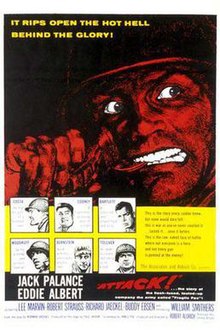 Attack theatrical poster |
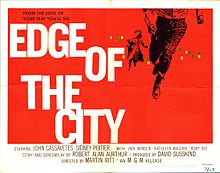 Theatrical release poster designed by Saul Bass |
 Theatrical release poster designed by Saul Bass |
 1957 theatrical poster |
 Film poster, designed by Saul Bass |
 1958 Theatrical Poster |
 Original poster by Saul Bass |
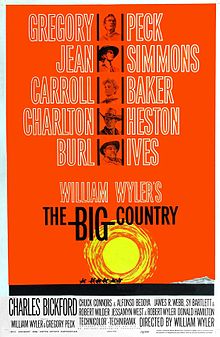 Theatrical release poster by Saul Bass |
 Theatrical release poster by Saul Bass |
 Theatrical release poster. |
 Theatrical release poster |
|
 Theatrical release poster by Reynold Brown |
 |
 Theatrical release film poster by Saul Bass |
|
 |
 Theatrical release poster by Saul Bass |
 Original poster art |
 Theatrical release poster by Saul Bass |
 Theatrical release poster inspired by Saul Bass's opening title sequence |
 |
 Original film poster by Saul Bass |
 theatrical release poster by Jack Davis |
 Promotional poster by Saul Bass |
 Film poster by Saul Bass |
 film poster by Saul Bass |
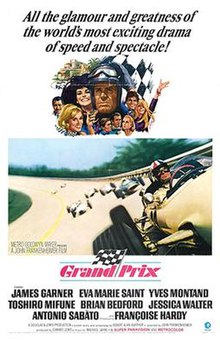 Theatrical release poster by Howard Terpning |
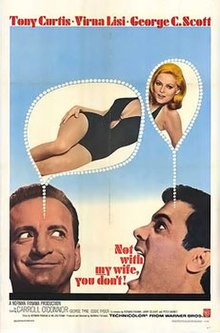 Theatrical release poster |
 Theatrical release poster for Seconds |
 Theatrical release film poster by Saul Bass |
 DVD cover |
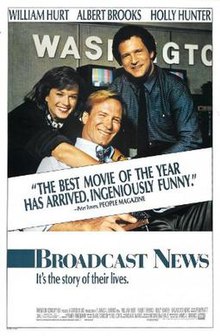 Theatrical release poster |
 Promotional film poster |
 Theatrical release poster |
 Theatrical release poster |
 Theatrical release poster |
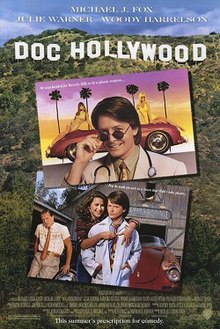 Theatrical release poster |
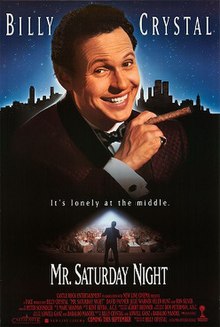 |
 Theatrical release poster |
 Theatrical release poster |
 Theatrical release poster |
Logos and other designs

Logos designed by Saul Bass. From top left: Bell System, AT&T, General Foods, United Airlines, Avery International, Continental Airlines, Celanese, United Way, Rockwell International, Minolta,
Girl Scouts of the USA, Lawry's Foods,
Dixie, Quaker Oats, Frontier
Airlines, Alcoa, Warner Communications, and
Fuller Paints
Selected logos by Saul Bass and their respective dates (note that the links shown point to articles on the entities themselves, and not necessarily to the logos):
|
|
 Alcoa logo designed by Saul Bass in 1963 |
 Avery logo designed by Saul Bass in 1975. he Avery logo designed by Saul Bass in 1975. It is still used on Avery products. |
 Boys Club logo designed by Saul Bass in 1980 |
|||||||||
 |
 |
||||||||||
 General Foods' final logo, designed by Saul Bass, was used from 1985 until the merger with Kraft in 1990. |
 http://en.wikipedia.org/wiki/Girl_Scouts_of_the_USA |

Jomo logo designed by Saul Bass in 1994
|
J. Paul Getty Trust logo designed by Saul Bass in 1993 |
||||||||
 Minolta logo designed by Saul Bass in 1981. |
 NCR Corporation logo designed by Saul Bass in 1996. |
 Quaker Oats Company logo designed by Saul Bass in 1969. This logo is still used corporately. |
|||||||||
 Rockwell International logo; Saul Bass designed the oval in 1968. |

Saul Bass designed logo of
Security Pacific Bank, used prior to the BankAmerica
merger
|
|
|||||||||

|
 Wienerschnitzel logo designed by Saul Bass in 1978. |
 |
An analysis of a sample of Bass’s corporate logos in 2011 found them to have an unusual longevity. The most common cause of the demise of a Bass corporate logo (in the selection analyzed) was the demise or merger of the company, rather than a corporate logo redesign. The average lifespan of a Bass logo is more than 34 years, and counting.[12]
Movie posters

Vertigo poster designed by
Bass.
He created some of his best known posters for films directed by Otto Preminger, Alfred Hitchcock, Billy Wilder, and Stanley Kubrick among others. His last commissioned film poster was created for Steven Spielberg's Schindler's List (1993), but it was never distributed.[13] His poster work spanned five decades and inspired numerous other poster and graphic designers. Bass's film posters are characterized by a distinctive typography and minimalistic style.
Selected posters by Saul Bass, and their respective dates.
1950s

Love in the
Afternoon poster designed by Bass.
- Carmen Jones (1954)
- The Man with the Golden Arm (1955)
- Edge of the City (1956)
- Storm Center (1956)
- Love in the Afternoon (1957)
- Saint Joan (1957)
- Bonjour Tristesse (1958)
- The Big Country (1958) (style b poster)
- Vertigo (1958)
- Anatomy of a Murder (1959)
1960s

Anatomy of a Murder
poster designed by Bass
- Exodus (1960)
- The Magnificent Seven (1960) (design not used)
- One, Two, Three (1961)
- Advise & Consent (1962)
- It's a Mad, Mad, Mad, Mad World (1963)
- The Cardinal (1963)
- In Harm's Way (1964)
- Bunny Lake is Missing (1965)
- The Firemen's Ball (1967)
- The Two of Us (1967)
- Why Man Creates (1968)
- Very Happy Alexander (1969)
1970s

The Shining poster
designed by Bass.
- Such Good Friends (1971)
- Rosebud (1975)
- Brothers (1977)
- Notes on the Popular Arts (1977)
- Bass on Titles (1978)
- The Human Factor (1979)
1980s and 1990s
- The Shining (1980)
- The Solar Film (1980)
- Return from the River Kwai (1989)
- Schindler's List (1993) (undistributed poster)
In addition to movie posters, Bass designed numerous posters for film festivals, and several magazine, book, and album covers. He also designed five Academy Award Presentation posters and the Student Academy Award for the Academy of Motion Picture Arts and Sciences.[17] In 1962 he illustrated his only children’s book, Henri’s Walk to Paris, written by Lenore Klein.[18]
Filmmaker
During the 1960s, Bass was asked by directors and producers to produce not only title sequences for their films, but also to visualize and storyboard key scenes and sequences within them. Bass has the unusual credit of “visual consultant” or “pictorial consultant” on five films. For Spartacus (1960), Bass as “visual consultant” designed key elements of the gladiator school and storyboarded the final battle between slaves and Romans. John Frankenheimer, the director of Grand Prix (1966), had Bass storyboard, direct, and edit all but one of the racing sequences for his film. For West Side Story (1961) Bass filmed the prologue, storyboarded the opening dance sequence, and created the ending title sequence.[2]It is Bass’s credited role as “pictorial consultant” for Alfred Hitchcock on Psycho (1960), however, that has caused some controversy. Bass claimed that he participated in directing the highlight scene of Psycho, the tightly edited shower-murder sequence, though several on set at the time (including star Janet Leigh) disputed his contention of "direction". It can be argued, however, that the dispute was simply semantic in nature with Bass's use of the term "directing" reflecting his own perspective on the "directorial" value of his influential graphic contribution to the scene, while the position of others on the set was based on the scene being literally directed by Hitchcock as the film director ultimately in charge of all artistic decisions.
The research of several film scholars on Hitchcock's production of Psycho validates the claim that Bass in his capacity as a graphic artist did indeed have a significant influence on the visual design and pacing of that famous scene. Hitchcock had asked Bass to design and produce storyboards for the shower-murder scene and for some other scenes in the film. For this, Bass received a credit as Pictorial Consultant as well as Title Designer. Janet Leigh told Donald Spoto that “the planning of the shower scene was left up to Saul Bass, and Hitchcock followed his storyboard precisely. Because of this . . . [the shooting] went very professionally,”[19] and she told Stephen Rebello that “Mr. Hitchcock showed Saul Bass’s storyboards to me quite proudly, telling me in exact detail how he was going to shoot the scene from Saul’s plans”.[20]
Bill Krohn has noted that Bass's 48 story board panels for the scene introduced all the key aspects of the final shower-murder scene, namely the fact that the attacker would be seen as a silhouette, the shower curtain torn down, a close-up of the shower head from below, a high angle shot of the murder scene with the curtain rod used as a barrier and the famous shot of the transition from the drainage hole of the bathtub to Marion Crane's dead eye which as Krohn notes is reminiscent of Bass's iris titles for Vertigo.[21] Krohn also concludes that Bass did not literally direct the shower-murder scene, proving Hitchcock's presence on the set throughout the shooting of that scene conclusively.[21]
Bass introduced the idea of using a montage of fast cuts and tight framing to render a violent, bloody murder as an impressionistic and nearly bloodless one. Hitchcock felt uncertain about Bass’s conception of the scene fearing that audiences might not accept such a stylized and quickly cut sequence. In an interview with film historian Pat Kirkham, Bass recalled, “Having designed and storyboarded the shower sequence, I showed it to Hitch. He was uneasy about it. It was very un-Hitchcockian in character. He never used that kind of quick cutting; he loved the long shot”.[2]
To convince Hitchcock that the scene would work as planned, eight days before shooting of the final shower scene, Bass used a newsreel camera and Janet Leigh’s stand-in Marli Renfro to shoot footage on the set to plan the shots in more detail. Working with Hitchcock's editor George Tomasini, he edited this footage following the storyboards to show Hitchcock how the scene could work. In the end, Hitchcock gave his approval but, according to Kirkham, made two additions: a spray of blood on the chest of Marion Crane/Janet Leigh as she slides down the tiles, and a close-up of her belly getting stabbed.[2]
In 1964, Bass directed a short film titled The Searching Eye shown during the 1964 New York World's Fair, coproduced with Sy Wexler. He also directed a short documentary film called Why Man Creates for which he won an Academy Award Oscar in 1968. An abbreviated version of that film was broadcast that year on the first episode of the television newsmagazine 60 Minutes. In 2002, this film was selected for preservation in the United States National Film Registry by the Library of Congress as being "culturally, historically, or aesthetically significant".[22] Saul Bass co-directed with his wife Elaine Bass several other short films, two of which were nominated for Academy Award Oscars; Notes on the Popular Arts in 1977, and The Solar Film in 1979, the latter for which Robert Redford was the executive producer.
In 1974, he made his only feature length film as a director, the visually splendid though little-known science fiction film Phase IV, a "Quiet, haunting, beautiful, [...] and largely overlooked, science-fiction masterwork".[23]
Quotes
| This section is a candidate to be copied to Wikiquote using the Transwiki process. |
- "My initial thoughts about what a title can do was to set mood and the prime underlying core of the film's story, to express the story in some metaphorical way. I saw the title as a way of conditioning the audience, so that when the film actually began, viewers would already have an emotional resonance with it."[24]
- "Design is thinking made visible."[25]
- "There is nothing glamorous in what I do. I'm a working man. Perhaps I'm luckier than most in that I receive considerable satisfaction from doing useful work which I, and sometimes others, think is good."[26]
- "Symbolize and summarize."[27]
See also
References
- ^ Google Doodle
- ^ a b c d Kirkham, Pat (10). "Reassessing the Saul Bass and Alfred Hitchcock Collaboration". West 86th 18.
- ^ "GranneBlog » Saul Bass changed how audiences view movie credits". Blog.granneman.com. Retrieved 2012-06-06.
- ^ Kael, Pauline. “One, Two, Three.” Film Quarterly Vol. 15, No. 3. (Spring, 1962): 62-65
- ^ Bass, Saul (1977) Bass on Titles. Pyramid Films. Santa Monica, CA
- ^ "Library | Exhibitions and Events | Saul Bass: biography". BFI. 2012-05-11. Retrieved 2012-06-06.
- ^ Interview with Olivier Kuntzel and Florence Degas, designers of the Catch Me If You Can title sequence. Artofthetitle.com. Retrieved 2011-12-10
- ^ Interview with Simon Clowes, designer of the X-Men First Class title sequence. Watchthetitles.com
- ^ Mad Men Q&A: Mad Men Title Designers Mark Gardner and Steve Fuller Retrieved 2011-12-19
- ^ Serling, Robert J. (1974). Maverick: The story of Robert Six and Continental Airlines. Doubleday & Company. ISBN 0-385-04057-1.
- ^ "A postage stamp by Saul Bass". Retrieved 2011-04-02.
- ^ Annyas, Christian (2011) Saul Bass Logo Design: Then and Now – The average lifespan of a Saul Bass logo is 34 years. Retrieved 2011-11-23
- ^ Kirkham, Pat & Jennifer Bass (2011) Saul Bass: A Life in Film & Design (pp. 406 and 420). London: Laurence King
- ^ Schaefer, Stephen (September 08, 1995). "Poster Imposter". Entertainment Weekly. 2011-04-02.
- ^ "Burn After Reading Poster Inspired by Saul Bass". /Film. June 17, 2008.
- ^ "Saul Bass". Dieselation. 2009-05-30. Retrieved 2012-06-06.
- ^ "Student Academy Award". Oscars.org. Retrieved 2011-12-20.
- ^ "grain edit · Henri’s walk to Paris : Designed by Saul Bass". Grainedit.com. 2012-02-14. Retrieved 2012-06-06.
- ^ Spoto, Donald (1999 [1983]). The Dark Side Of Genius: The Life Of Alfred Hitchcock. New York: De Capo Press. (pp.454-455)
- ^ Rebello, Stephen (1990). Alfred Hitchcock and the Making of Psycho. New York: St. Martin's Griffin. (p. 102) ISBN 0-312-20785-9.
- ^ a b Krohn, Bill (2003). Hitchcock at Work. (pp. London: Phaidon Press. (p. 231)
- ^ Library of Congress - Press Release - December 12, 2002[dead link]
- ^ Scalzo, Thomas (August 8, 2005). "Phase IV (review)". Not Coming to a Theater Near You (notcoming.com). Retrieved 2008-10-16.
- ^ Haskins, Pamela (Autumn 1996). "Saul, Can You Make Me a Title? Interview with Saul Bass". Film Quarterly. pp. 12-13.
- ^ Kirkham, Pat & Jennifer Bass (2011) Saul Bass: A Life in Film & Design. London: Laurence King
- ^ "Art Directors Club biography & images of work". adcglobal.org. Retrieved 2011-04-02.
- ^ Saul Bass. "Saul Bass | RIT Graphic Design Archive". Library.rit.edu. Retrieved 2012-06-06.
Further reading
- Kirkham, Pat and Jennifer Bass (2011). Saul Bass: A Life in Film & Design. London: Laurence King. ISBN 978-1-85669-752-1.
- Tomislav Terek (2001). Saul Bass on Titles: Film Titles Revealed. Defunkt Century. ISBN 1-903792-00-2.
External links
| Wikimedia Commons has media related to: Saul Bass |
- Saul Bass at the Internet Movie Database
- Titles Designed by Saul Bass (still sequences & commentary)
- Saul Bass Title Sequences on Art of the Title
- Title Sequences from Saul Bass (videos & commentary)
- Saul Bass Posters Archive
- Saul Bass on the Web
- Saul Bass in the Looniverse
- Pitch video for 1969 Bell System logo, uniform, and vehicle redesign
| Authority control |
|---|
lllllllllllllllllllllllllllllllllllllllllllllllllllllllllllllllllllllllllllllllllllllllllllllllllllllllllllllllll
Saul Bass
saul bass titles
http://www.youtube.com/watch?v=AYLpEUETIT8&list=PL4FDC56F2CEAFAFD1
http://www.youtube.com/watch?v=s1A7bJD3atk
<iframe width="640" height="360" src="http://www.youtube.com/embed/s1A7bJD3atk?rel=0" frameborder="0" allowfullscreen></iframe>
4:12 Subido el 11/04/2010 Frank Rizzo·83 vídeos
Saul Bass was not only one of the
great graphic designers of the 20th century but the undisputed
master of film title design.
Saul Bass title sequence - Ocean's Eleven (1960)
Saul Bass title sequence - The victors (1963)
Saul Bass title sequence - Seconds (1966)
'Edifice Sequence' from Saul Bass' Why Man Creates
Saul Bass title sequence - Spartacus (1960)
The Killing (1954) Saul Bass style Opening Titles
Saul Bass title sequence - Anatomy of a murder (1959)
Saul Bass title sequence - Goodfellas (1990)
Saul Bass- Advice to Design Students
Saul Bass title sequence - A personal journey with Martin Scorsese through American movies (1995)
Saul Bass title sequence - Saint Joan (1957)
Saul Bass Title Sequence for Hitchcock's 'Psycho'.
Saul Bass title sequence - Seconds (1966)
Saul Bass title sequence - Such good friends (1971)
Saul Bass title sequence - Walk on the Wild Side (1962)
Saul Bass title sequence - Not with my wife, you don't! (1966)
Re: Star Wars vs. Saul Bass


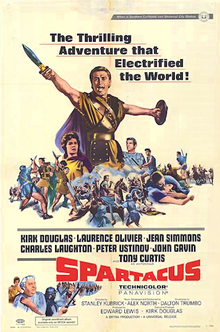


No hay comentarios:
Publicar un comentario